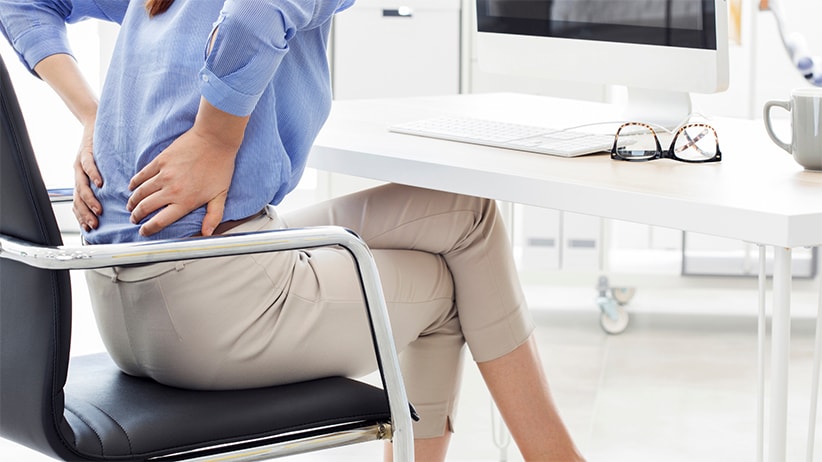
What is Posture?
According to the Merriam-Webster dictionary, the meaning of posture is ‘the position or bearing of the body whether characteristic or assumed for a special purpose.’ Another definition of posture is that it refers to the body’s position or the arrangement of body parts in relation to each other.
In simple terms, physical posture is the form of your body. It is what gives your body its shape or structure through the proper positioning of the muscles, bones, joints and nerves. Here, we’ll talk about everything posture-related, including the types of posture, common posture problems and how to alleviate bad posture.
Types of posture
Proper and healthy posture is rooted in the body’s natural position that enables it to balance and support the curves of the skeletal system and its weight-bearing capacity against the force of gravity.
3 types of posture
There are three basic types of posture:
- Normal or neutral posture
Defining what is normal posture for people in general is a bit difficult because there are tall, short, thin, medium, petite and heavyset individuals, and their spines conform to their shape accordingly. However, people are advised to maintain a neutral posture, which is essentially a good posture.
Here the spine is in a neutral position. The muscles, joints and ligaments are aligned, thereby reducing stress. Maintaining a neutral position also helps keep your body flexible and balanced.
- Slouch
Scientifically known as ‘kypholordosis,’ slouching is a common bad posture that afflicts both men and women. It is commonly developed by people who spend hours hunched over their table or a computer.
A slouching position combines a hunched back and a head that’s leaning forward. Due to the hunched back, the shoulders also end up rounded forward. This decreases lung capacity over time.
- Stooping or swayback
People who get used to a stooping or swayback position have a tendency to focus their weight on the lower back. This usually leads to back pain in the long term.
In a stooping position, the hips sway forward relative to the movement of the feet, while the back and shoulders are leaning back. The knees tend to be quite straight and may even end up hyper-extended as the head cranes forward.
This position is commonly observed in young people or adolescents and in those who tend to stand for extended periods.
4 types of postural alignment
Optimal postural alignment is a basic requirement for optimal movement function as it enables the body to maintain postural stability. However, many people do not have an ideal or neutral posture.
Below are four types of postural alignment that deviate from the ideal or recommended neutral posture:
- Kyphosis
People with kyphosis have an increased curvature in the thoracic spine. Aside from this, they have rounded shoulders. This contributes to a hunched-over appearance, a slightly posterior pelvic tilt and a forward head position. The chest is depressed as well.
Kyphosis is common among the elderly, clerical workers, heavy or obese and very tall people, as well as large-breasted women.
- Lordosis
Generally observed among truck drivers and pregnant women, lordosis is characterised by a spine that has a pronounced curve in the lower back portion combined with an increased pelvic tilt. In this posture, the stomach and head are pushed forward. Lordosis is also referred to as a hollow or saddle back posture.
- Sway back
People with a sway back postural alignment has a neutral or posterior pelvic tilt and a hip that nearly rolls upward to the front. People with a sway back tend to poke their head forward and have an upper back curving forward.
It is sometimes viewed as a relaxed posture and is usually seen in pregnant women, overweight individuals whose weight is centred in the abdominal region and among teenagers posing with an ‘attitude’ in their stance.
- Flat back
People with a flat back have very little or no lumbar curve at all and usually exhibit a posterior pelvic tilt. They tend to stoop forward and can experience difficulty in straightening their knees when standing. Prolonged standing becomes painful for them, and they are prone to back and leg pain. Flat back syndrome can originate from compression fractures and degenerative disc disease.
What causes bad posture?
Poor or bad posture, also known as ‘postural dysfunction,’ keeps the spine in an unnatural position. It stresses the joints, muscles and spinal column.
People usually develop bad posture at a young age and, if not addressed, can carry on to old age. People’s sedentary lifestyles and excessive technology use have all led to bad neck posture and all sorts of postural faults.
What are some common posture problems?
There are many types of posture problems; however, the following are the most common:
- Bad posture causing middle back pain: This type of pain is felt in the thoracic spine – that area just below the neck and above the bottom section of the rib cage. Symptoms include a burning sensation, dull or sharp pain, muscle pain and muscle tightness or stiffness.
- Bad posture causing neck and shoulder pain: Maintaining a hunched-over position can lead to pain in the neck, upper back and shoulders. Muscle tightness or stiffness in the area can also develop.
- Upper back pain due to bad posture: Similar to neck and shoulder pain, upper back pain can be caused by leaning or crouching over a table or laptop for prolonged periods. Crossing your legs while sitting and using an uncomfortable chair can also cause upper back pain.
- Bad posture causing hip pain: Hip pain is usually felt as intense aches in the joints surrounding the hip that can make moving difficult. It can result from staying in one position for an extended period, wearing high heels, sitting in certain kinds of chairs, etc.
How to correct bad posture
Correcting bad posture takes commitment and patience. How long it takes to fix bad posture also depends on the extent of the postural problem.
How to fix bad posture fast
Determining how to correct your posture requires self-knowledge and awareness. The moment you decide to address your postural problem, you also need to make a conscious effort to focus and check yourself daily.
If you work a lot using a laptop, tablet or mobile phone, you need to find ways to optimise sitting or standing while using these gadgets. You can also make changes to your physical setup and make it more conducive to correcting your posture. This includes using height-adjustable desks and ergonomic chairs and tables.
You can also engage in posture-improving workouts or back strengthening exercises. Yoga and Pilates, although not exclusively designed to correct or improve posture, include certain movements that strengthen not only the back but also core muscles that are essential in achieving a good posture. You can also try compression clothing which increases proprioception (awareness of the body in space), which improves posture.
Most of all, even if you want to correct your bad posture as quickly as possible, you need to remember that adopting a neutral posture takes time, patience and practice.
How to correct sitting posture
If you’re asking about how to fix a bad sitting posture, applying the above tips should help. However, if you work a lot sitting in a chair for long hours, one of the first changes you can easily make to have a correct sitting posture is to get an ergonomic office chair that’s designed to improve sitting posture.
Examples of ergonomic office chairs include the following models by Arteil:
- JADE MK1
The Jade MK1 office chair has a sliding seat that gives you flexibility in changing positions. You can adjust the seat height, seat angle, back height and back angle for an optimum sitting position. Its ratchet back and air lumbar feature ensure you get adequate total back support, even when you are tempted to slouch. Add the optional arms as these will support your goal to sit better.
- KAB ACS EXECUTIVE
Superior and truly living up to the definition of ergonomics, the Kab ACS Executive chair is designed to help heavy people with their sitting posture. It features height/tilt adjustable headrests, body-contoured cushions and tip-up that provide optimum comfort and support. The air lumbar bag adjusts to your lower back, whilst the backrest recline with a 16-degree angle adjustment helps to maximise comfort.
- SYNCHRO MESH EXECUTIVE
The contemporary-designed Synchro Mesh Executive has a durable mesh backrest to keep you comfortably cool while working on your daily tasks. It has five chair adjustment features: seat height, seat angle, back height, back angle, and sliding seat. This way, your body benefits from better spinal alignment and increased circulation no matter your body type or personal requirements.
The chairs recommended above improve your sitting posture and help alleviate lower back pain, which is a natural cause of bad posture.
How to improve standing posture
If you have a poor standing posture – whether you excessively lean back or are hunched forward while standing – you have to consciously adopt a correct standing posture.
We’re usually told to stand straight and tall, but the optimum or healthy posture is to stand with the knees bent a little and the shoulders slightly back. By maintaining this position, the spinal column can maintain vertical equilibrium. It works well to support the natural position of the pelvis and lumbar, thoracic and cervical curves of the spine.
When you walk, remember that it is simply an extension of your neutral standing position. To help you maintain a proper stance while walking, invest in supportive footwear, too.
Achieve a good posture with practice
Postural problems are common, but there are ways to correct them and help you attain the optimum posture, whether you’re sitting, standing, walking or laying down.
Implement the tips shared here to improve your posture for better health.
